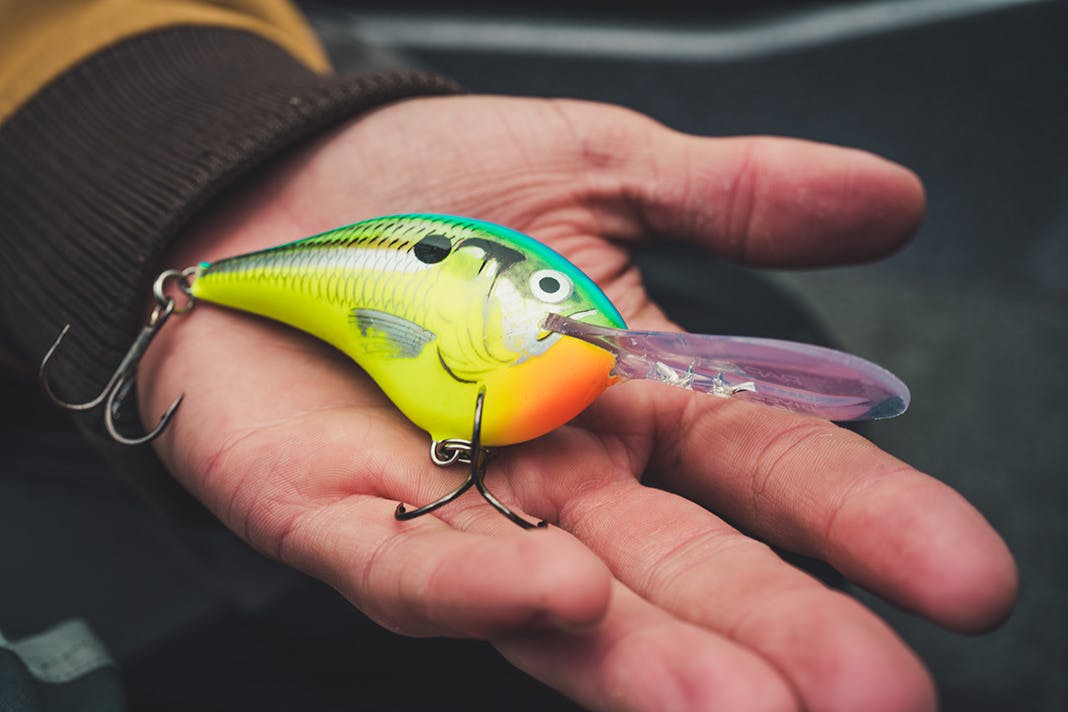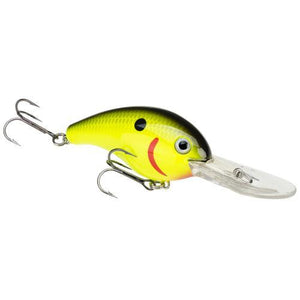
How To Fish Deep Diving Crankbaits
One of the most challenging aspects of offshore fishing is locating fish, but with a deep crank you can cover a lot of water and find the most aggressive fish in an area. Whether it is a big loud crankbait with lots of rattles or a balsa bait that sneaks up on fish, deep cranking is one of the best ways to locate schools of active fish.
Selecting The Right Deep Cranking Bait
Most people think crankbaits are all the same. Big body, treble hooks, and a plastic bill. This just scratches the surface of what you should be considering when selecting the right crankbait.
What are the best balsa wood crankbaits?
What was once considered the “Old school” style of crankbaits has since been making a huge resurgence in the fishing industry. Balsa is a wood and is soft and very buoyant, this allows for balsa’s infamous tight wobbling action. This tight wobbling makes it a great choice in cold water. Additionally, balsa crankbaits are great when fishing around docks, stumps, trees, or thick grass. Fishing a crankbait around heavy cover is often an issue due to snag ups, however because of the buoyancy of these baits they can be fished around the thickest of cover. When the bait gets snagged and you stop reeling it in, it will start to float up and away from the cover and free itself. This can be a great way to work grass lines, timber, or docks.
One of the most popular balsa crankbaits ever is the Rapala DT Series.
What are the best plastic crankbaits?
The most common material for crankbaits is plastic. These baits are more durable and easier to produce. Plastic baits are molded, therefore it is much easier to insert weight transfer systems and rattles. This is the main advantage to a plastic crankbait. Weight transfer systems can give the bait a wide, erratic action and help the bait cast further. These rattles send out vibrations that the bass can sense with their lateral line. Also, crankbaits that feature a rattle are often the best way to get the most aggressive fish to bite.
Check out the Strike King 5XD!
What is the right color for deep cranking?
Like all lures, color is a factor that should be considered when making a bait selection. Depending on the type of forage, time of year, and water temperature, there are key things to be attentive of. When it comes to forage, match the hatch. If the bass are feeding on shad, white or chrome can be key. If the bass are feeding on bluegills, darker colors with orange or yellow accents can be the trick. Something to keep in mind is that because crankbaits are a reaction bait, your lure placement is far more important than the color. Putting the crankbait in front of the fish is critical to triggering their natural response to bite.
Selecting The Right Deep Cranking Gear
Without the proper gear, deep cranking can be a nightmare. Having the right rod, reel, and line all contribute to the success and efficiency of deep cranking.
What is the best deep cranking rod?
Deep crankbaits are often heavy and feature treble hooks, this means you need a rod to deal with these attributes. The rod many anglers will go with is a 7’ to 7’6”, moderate action rod. This moderate action means the rod will bend lower and further. The main advantage of this is to keep treble hooks from pulling out of the fish's mouth. Also, having a long rod helps to make the longest casts possible. This is critical as cast length dictates how long the crankbait will be at the desired depth.
What is the best reel for deep cranking?
Many anglers will choose a reel that has a deep spool, for lots of line capacity, and incorporates a slower gear ratio. Having lots of line is important in making those long casts. Also, because of the resistance, these baits produce, having a slower reel will offer more power to the angler and cause less fatigue over a long day fishing offshore.
What is the best line for deep cranking?
Selecting the right line is probably the most important part in making sure the bait is running as it is designed. The best choices are either a 10-12 pound monofilament or fluorocarbon line. A portion of anglers prefers monofilament because it offers stretch in the line and they believe it helps keep treble hooks from coming out. The other option is fluorocarbon which is much more abrasion resistant and thinner. When fishing around rocks or thick wood, the more abrasion-resistant fluorocarbon is often the better option. The most common mistake anglers make when deep cranking is having a line that is too heavy. This dulls the action of the bait and also does not allow the bait to reach its maximum depth.
One of the top-selling monofilament options is the Suffix Siege.
One of the top-selling fluorocarbon options is the Seaguar InvizX.
How To Use Deep Diving Crankbaits
The most important thing when fishing a deep crankbait is making the longest cast possible. Without a long cast, the bait is not in the strike zone very long and everything else becomes obsolete.
What is the best location for deep cranking fishing?
A deep crankbait excels in open areas where it can be a challenge to locate fish. These areas often have hard bottom or rocks. Having these rocks can be a huge advantage as deflecting the bait off rocks will create a reaction bite. Common places to include points, ledges, and rock piles.
How deep should I fish when deep cranking?
As the name suggests, deep crankbaiting is often done in “deep” water. Deep is all relative to where you are, normally it is 10 feet or deeper. Because you are fishing this bait on or near the bottom, choosing a bait that runs at the proper depth is critical. Fishing a bait that does not dive deep enough means you'll be running right over the fish heads and they won't get a chance to bite. Additionally, fishing a bait that dives too deep will cause you to just dig into the bottom. Although neither is desired, a bait that dives too deep is better than one not diving deep enough. Each lure will have a depth rating by the manufacturer, having a variety of baits for all depths will maximize your crankbaiting success.
What is the best way to cast and retrieve when deep cranking?
After making an extremely long cast, reel fast for a few rotations of the handle. This gets the bait down to the depth that is desired quickest. Once the bait is in the desired depth, use a steady retrieve all the way back to the boat. Something that can trigger more bites is pausing your retrieve when you feel the bait deflect off of something on the bottom. This is something that might make the difference on a tough day of fishing.
Seaguar InvizX 100% Fluorocarbon
4lb / 200 Yards






